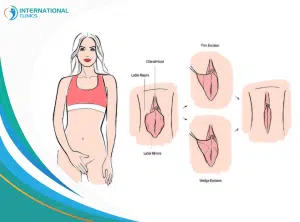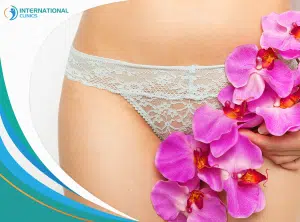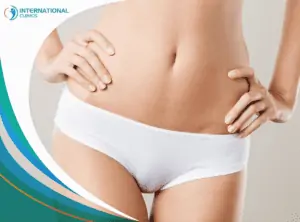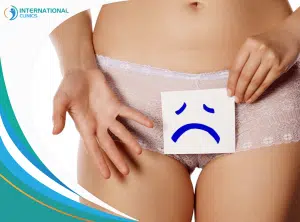Labiaplasty scarring – it’s a concern that many patients have when considering this procedure. But fear not, because proper aftercare can make all the difference in minimizing those worries. So, what exactly causes labiaplasty scarring?
Anatomy plays a significant role here. The labia minora, delicate folds of skin surrounding the vaginal opening, are reshaped during labiaplasty.
This surgical alteration can result in scarring as part of the healing process. However, with the right information and care, you can help minimize the visibility and discomfort of scarring after any plastic surgery in Turkey.
That’s where aftercare comes into play! By following your surgeon’s guidance and taking necessary precautions like keeping the area clean and avoiding strenuous activities, you give yourself a better chance at an optimal outcome.
Remember, open communication with your surgeon is key. They understand your concerns about scarring and can provide personalized advice to manage expectations throughout your journey.
So if you’re considering labiaplasty or have recently undergone the procedure, rest assured that understanding labiaplasty scarring and prioritizing aftercare are essential steps towards achieving a successful outcome.
Now let’s explore everything you need to know about labiaplasty scarring and how to ensure a smooth recovery.
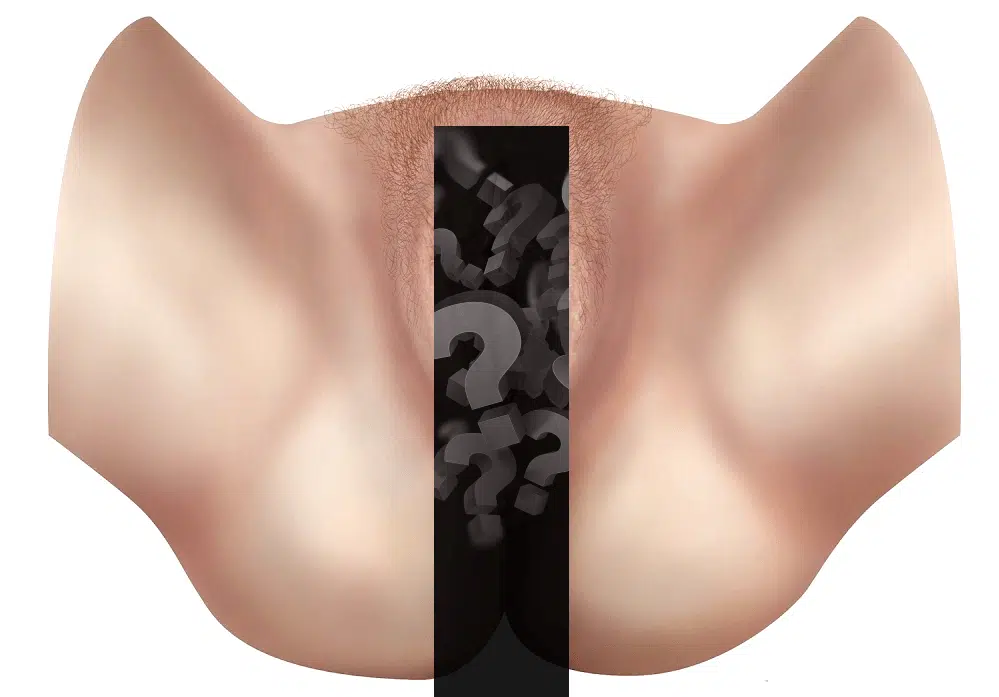
What to Expect: Labiaplasty Scarring and Appearance
Scarring after Labiaplasty
- Labiaplasty patients should be aware that some degree of scarring is normal after the procedure.
- The extent of scarring can vary depending on individual healing processes and techniques used during the surgery.
Varying Appearance of Labiaplasty Scars
- Each person’s body heals differently, so it’s important to understand that the appearance of labiaplasty scars can vary.
- Some scars may be more noticeable initially but will fade over time, while others may blend with surrounding tissue sooner.
- It is crucial to have realistic expectations and understand that complete scar elimination is not always possible.
Minimizing Visible Scarring
- Surgeons strive to minimize visible scarring by utilizing advanced techniques during labiaplasty procedures.
- They carefully plan incisions, ensuring they are placed discreetly and within natural folds for optimal camouflage.
- Techniques such as dissolvable sutures or meticulous stitching help reduce the risk of prominent scarring.
Get your free medical consultation now!
Patience is Key for Scar Healing
- Patience plays a vital role. It takes time for scars to fade and blend with the surrounding tissue.
- Initially, scars may appear red or pink, but they tend to lighten gradually over several months.
- Applying scar creams or silicone sheets as recommended by your surgeon can also aid in scar fading.
Postoperative Care for Optimal Healing
To ensure proper healing and minimize scarring after labiaplasty, follow these postoperative care tips:
- Keep the surgical area clean: Gently wash the area with mild soap and water daily, patting it dry afterward. Avoid harsh cleansers or rubbing vigorously.
- Wear loose-fitting clothing: Choose breathable, loose-fitting underwear and clothing to avoid unnecessary friction or irritation.
- Avoid strenuous activities: Refrain from engaging in vigorous exercise or activities that could strain the surgical area for at least a few weeks.
- Follow your surgeon’s instructions: Your surgeon will provide specific guidelines tailored to your unique case. Adhere to these instructions diligently.
- Attend follow-up appointments: Regularly visit your surgeon for postoperative check-ups, allowing them to monitor your healing progress.
Factors Affecting Labiaplasty Scarring
Healing Ability, Genetics, and Skin Type
The first set of factors that can influence labiaplasty scarring is related to the patient’s individual characteristics.
Healing ability, genetics, and skin type all play a role in how the body responds to surgery and the subsequent scarring. Some individuals naturally have a higher tendency to develop scars, while others may heal more easily without significant scarring.
For example:
- Those with a family history of excessive scarring or keloids may be more prone to developing noticeable scars after labiaplasty.
- Individuals with dry or sensitive skin might also be at a higher risk for complications during the healing process.
Surgical Technique, Suture Material & Postoperative Care
Aside from patient factors, various surgical aspects can impact scar formation after labiaplasty. The technique used by the surgeon, the choice of suture material, and postoperative care instructions all contribute to the final outcome.
- Surgical Technique: Different surgeons may employ distinct techniques when performing labiaplasty. While some techniques aim to minimize scarring by preserving tissue integrity and reducing trauma during surgery, others may carry a higher risk of visible scars.
- Suture Material: The type of suture material used during closure can affect scarring as well. Surgeons may choose dissolvable sutures or non-dissolvable ones depending on their preference and assessment of each patient’s needs.
- Postoperative Care: Following proper wound care instructions is crucial for minimizing scarring after labiaplasty. This includes keeping the area clean, avoiding excessive physical activity that could strain the incisions, and following any additional guidelines provided by the surgeon.
Surgeon Experience & Skill
Another key factor influencing labiaplasty scarring is the experience and skill level of the surgeon performing the procedure.
A highly experienced and skilled surgeon is more likely to have a deep understanding of tissue healing, use advanced techniques, and employ meticulous surgical methods. This expertise can significantly contribute to minimizing scars and achieving optimal results.
- Surgeons who specialize in labiaplasty procedures and have performed numerous successful surgeries are generally better equipped to handle potential complications and optimize wound healing.
- Their knowledge of the nuances of labial anatomy allows them to create precise incisions, resulting in minimal scarring.
Minimizing Scarring: Techniques and Tips for Labiaplasty Patients
Choosing the Right Surgeon
Choosing an experienced surgeon who specializes in this specific surgery is crucial even if this increases plastic surgery prices in Turkey.
Opting for a surgeon with expertise in labiaplasty minimizes the risks associated with scarring. These specialized surgeons are well-versed in the intricacies of labia minora tissue and can perform the procedure with precision, minimizing potential scarring.
Proper Wound Care
After undergoing a labiaplasty, proper wound care is essential for scar reduction. Keeping the surgical area clean and dry aids in the healing process and reduces the likelihood of excessive scarring. Here are some tips for effective wound care:
- Gently cleanse the surgical area with mild soap and water twice a day.
- Pat dry using a clean towel or air-dry to avoid irritation.
- Avoid using harsh chemicals or fragrances near the surgical site.
- Wear loose-fitting underwear made from breathable fabrics to promote airflow.
Rest & Recovery
During your recovery period, it’s important to avoid strenuous activities that may lead to complications and increased scarring. Take this time to rest and allow your body to heal properly. Here are some key points to remember:
- Avoid lifting heavy objects or engaging in intense physical activities for at least four weeks post-surgery.
- Refrain from sexual intercourse until your surgeon gives you clearance.
- Follow your surgeon’s instructions regarding showering, bathing, or swimming restrictions during recovery.
Silicone Gel or Sheets
Applying silicone gel or sheets as recommended by your surgeon can significantly improve the appearance of scars after labiaplasty surgery. Silicone products create a protective barrier over the incision site, reducing redness, itching, and discomfort while promoting optimal healing.
- Consult with your surgeon about which silicone product is best suited for your specific needs.
- Apply the silicone gel or sheets as directed, typically twice a day, for several weeks or months.
By following these techniques and tips, you can minimize scarring risks associated with labiaplasty surgery. Remember to consult with your surgeon for personalized advice and guidance throughout your recovery journey.

Addressing Concerns: Will Scarring Occur After Your Labiaplasty?
Having concerns about scarring after a labiaplasty procedure is completely normal. It’s important to understand that some degree of scarring is expected, but the good news is that most scars tend to fade over time.
By following postoperative instructions and attending follow-up appointments, you can address any concerns you may have about scarring.
Consulting with your surgeon before the procedure allows you to discuss potential scarring outcomes and gain a better understanding of what to expect.
Scarring after Labiaplasty: What to Expect
Scarring can vary from patient to patient depending on factors such as skin type, healing ability, and surgical technique used. While it’s impossible to predict exactly how your body will heal, there are some general expectations when it comes to labiaplasty scarring:
- Initial Healing Phase: In the first few weeks following surgery, it’s common for incision lines to appear red, raised, or slightly swollen. This is part of the normal healing process and should not cause alarm.
- Scar Maturation: Over time, scars undergo a maturation process where they become less noticeable and blend in with the surrounding tissue. This typically takes several months or even up to a year.
- Individual Healing: Each person heals differently, so while one individual may experience minimal scarring, another may have more prominent scars. Factors such as genetics and personal healing abilities play a role in how scars develop.
- Location of Incisions: The location of incisions made during the labiaplasty procedure can also influence scar visibility. Skilled surgeons aim to place incisions discreetly along natural creases or folds in order to minimize visibility.
Minimizing Scars: Tips for Optimal Healing
While some degree of scarring is inevitable after labiaplasty surgery, there are steps you can take to minimize their appearance and promote optimal healing:
- Follow Postoperative Instructions: Your surgeon will provide you with specific postoperative instructions, including wound care and hygiene practices. It’s crucial to follow these guidelines diligently to ensure proper healing.
- Attend Follow-Up Appointments: Regular follow-up appointments with your surgeon allow them to monitor your healing progress and address any concerns you may have about scarring. They can provide guidance on scar management techniques if necessary.
- Scar Massage: Once your surgeon gives the green light, gentle scar massage can help break down scar tissue and improve blood circulation in the area. This can contribute to a more favorable scar outcome.
- Avoid Sun Exposure: Protecting the surgical area from direct sunlight is essential during the healing process. UV rays can darken scars and make them more noticeable, so be sure to use sunscreen or cover up when spending time outdoors.
Exploring Labiaplasty Scars: Types, Healing Process, and Longevity
Categorizing Labiaplasty Scars
Labiaplasty scars can take different forms depending on the surgical technique used. They are typically classified as either linear or wedge-shaped scars.
Linear scars result from the removal of excess tissue along the edges of the labia minora (inner labia). On the other hand, wedge-shaped scars occur when a triangular section of tissue is removed from the labia minora.
The Healing Process
After undergoing labiaplasty, it’s important to understand that healing takes time. Initially, you may experience redness and swelling in the treated area.
This is completely normal and should gradually subside over several weeks. It’s crucial to follow your surgeon’s post-operative instructions to ensure proper healing.
Scar Longevity
While labiaplasty scars are permanent, they tend to become less noticeable with time. Initially, scars may appear more prominent due to their pink or reddish coloration.
However, as they mature and heal, they usually fade and blend in with the surrounding skin tone. It’s important to note that individual healing processes can vary, so patience is key.
Promoting Optimal Healing
Proper wound care and scar management techniques play a significant role in promoting optimal healing after labiaplasty. Here are some tips:
- Follow your surgeon’s instructions: Your surgeon will provide specific guidelines for caring for your incisions during recovery.
- Keep the area clean: Gently cleanse the area with mild soap and water daily.
- Avoid irritants: Refrain from using harsh chemicals or scented products near the surgical site.
- Avoid tight clothing: Wear loose-fitting underwear and clothing to minimize friction on the incision site.
- Apply topical treatments: Your surgeon may recommend using silicone-based gels or creams to help minimize scarring.
- Protect from the sun: Shield the surgical area from direct sunlight and use sunscreen with a high SPF when exposed.
By following these recommendations, you can support the healing process and potentially reduce the appearance of labiaplasty scars.
Speak with certified surgeons and medical consultants!
Labiaplasty Results: Assessing Scar Visibility & Patient Satisfaction
Labiaplasty is a surgical procedure that aims to reshape the labia, improving both appearance and comfort for patients. However, one concern that often arises is the visibility of scars after the surgery.
Individual Healing Factors and Surgical Techniques
Scar visibility can vary among patients due to individual healing factors and the specific surgical techniques used during labiaplasty. Every person’s body responds differently to surgery, and factors such as skin type, genetics, and overall health can influence how well scars heal.
The surgical technique employed by the surgeon plays a crucial role in scar visibility. Different techniques involve varying incision placements and closure methods.
For example, some surgeons use dissolvable sutures while others opt for non-dissolvable ones. The skill and expertise of the surgeon also contribute to minimizing visible scarring.
Aesthetic Outcomes and Scar Appearance
Patient satisfaction with labiaplasty results is influenced not only by aesthetic outcomes but also by scar appearance. While achieving a desired aesthetic outcome is essential for patient happiness, visible scarring can affect their overall satisfaction with the procedure.
Surgeons understand the importance of minimizing visible scarring to enhance patient satisfaction. They aim to create natural-looking results that blend seamlessly with surrounding tissues. By carefully considering incision placement and closure techniques, surgeons strive to minimize scar visibility while achieving aesthetically pleasing outcomes.
Managing Expectations through Communication
Open communication between patients and surgeons is crucial in managing expectations regarding scar visibility after labiaplasty. Surgeons should discuss potential scarring during preoperative consultations so that patients are aware of what to expect post-surgery.
During these discussions, surgeons can explain how individual healing factors may influence scar visibility and provide examples of previous cases with similar characteristics. This helps patients have a realistic understanding of potential outcomes and reduces the likelihood of dissatisfaction based solely on scar appearance.
Striving for Patient Satisfaction
The ultimate goal for surgeons performing labiaplasty is to ensure patient satisfaction. This involves not only achieving the desired aesthetic outcome but also minimizing visible scarring and addressing any post-operative discomfort or asymmetry.
To achieve optimal results, surgeons may recommend revision labiaplasty in cases where patients are unsatisfied with their initial outcomes.
Revision procedures can address concerns such as excess scar tissue, asymmetry, or other issues that may impact the appearance and comfort of the labial tissue.
Surgeons understand that patient comfort extends beyond physical aspects. Psychological well-being plays a significant role in overall satisfaction with the procedure.
By prioritizing patient concerns, actively listening to their feedback, and providing appropriate solutions, surgeons can enhance patient satisfaction and improve their overall experience.
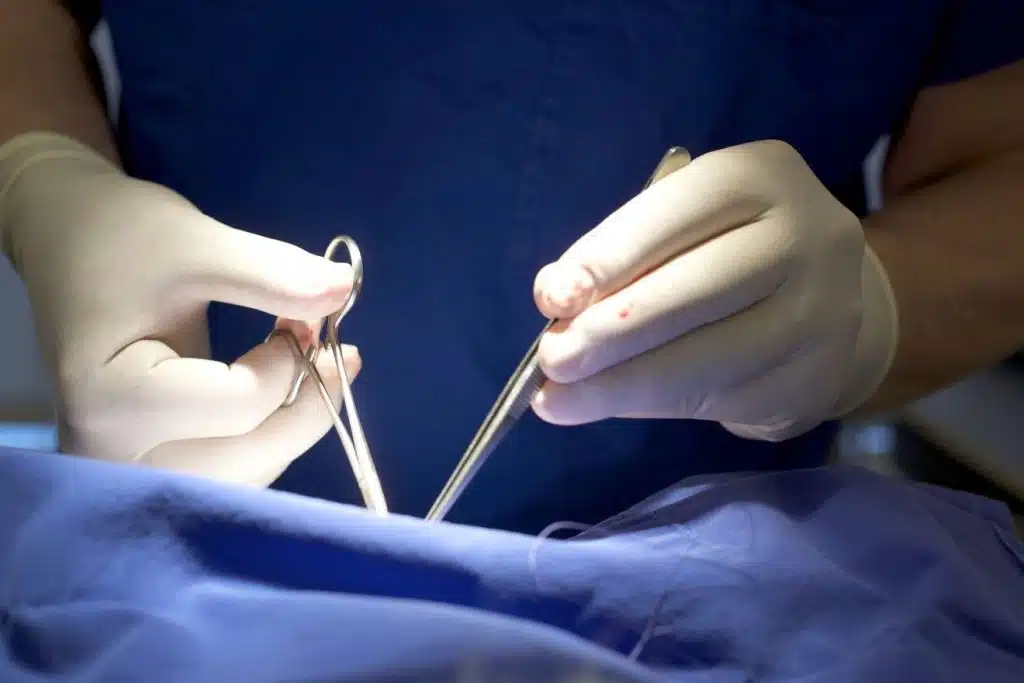
Achieving Optimal Results & Managing Expectations in Labiaplasty Scarring
Realistic Expectations: Embrace the Normalcy of Scarring
When considering labiaplasty, it’s essential to have realistic expectations about the scarring that may occur. While every effort is made to minimize scarring, it’s important to understand that some degree of scarring is a normal part of the healing process. The body naturally forms scar tissue as it repairs itself, and this is no different for labiaplasty procedures.
Preoperative Instructions: Setting the Stage for Success
To achieve optimal results in labiaplasty scarring, following preoperative instructions is crucial. Your surgeon will provide specific guidelines tailored to your individual needs. These instructions may include:
- Avoiding certain medications or supplements that can increase bleeding risks.
- Ceasing smoking before and after surgery to promote better healing.
- Maintaining proper hygiene in the genital area to reduce infection risks.
- Arranging for someone to assist with postoperative care during recovery.
By adhering to these instructions, you can set yourself up for a successful outcome and minimize potential complications.
Choose an Experienced Surgeon: Expertise Matters
Selecting an experienced cosmetic surgeon is vital when aiming for optimal results in labiaplasty scarring. An expert surgeon not only possesses technical skills but also understands the nuances of managing scarring effectively.
When researching potential surgeons, consider their qualifications, experience, and patient testimonials. Look for those who specialize in cosmetic genital procedures and have a track record of successful outcomes.
Proper Aftercare: Nurturing Healing and Minimizing Scars
Aftercare plays a significant role in achieving favorable labiaplasty scarring outcomes. Follow your surgeon’s postoperative instructions carefully, which may include:
- Keeping the surgical site clean and dry.
- Applying prescribed ointments or creams to aid healing.
- Wearing loose-fitting clothing to minimize friction and irritation.
- Avoiding strenuous activities or exercise that could disrupt the healing process.
By practicing proper aftercare, you can nurture the healing process and reduce the risk of complications that may contribute to more noticeable scarring.
Regular Follow-Up Visits: Monitoring Progress & Addressing Concerns
Scheduling regular follow-up visits with your surgeon is essential for monitoring the healing progress and addressing any concerns about scarring. During these appointments, your surgeon will evaluate how well the scars are forming, provide guidance on scar management techniques, and address any questions or anxieties you may have.
Attending these follow-up visits allows your surgeon to intervene promptly if necessary, ensuring optimal results in labiaplasty scarring.
Conclusion
In conclusion, labiaplasty scarring is a common concern for individuals considering this procedure. However, there are various techniques and tips available to minimize scarring and achieve optimal results. By understanding the factors that can affect labiaplasty scarring, patients can have realistic expectations about their appearance post-surgery.
It is important to note that while some scarring may occur after labiaplasty, the type of scar, healing process, and longevity can vary. Patients should be aware of the different types of scars that may develop and consult with their surgeon regarding the expected healing timeline.
Assessing scar visibility and patient satisfaction is crucial in determining the success of a labiaplasty procedure. By regularly monitoring the healing progress and addressing any concerns promptly, surgeons can ensure that patients are satisfied with their results.
To achieve optimal results in labiaplasty scarring, it is essential to manage expectations from the beginning. Realistic discussions between patients and surgeons regarding potential outcomes will help establish trust and avoid disappointment.
Furthermore, following proper aftercare instructions provided by your surgeon can significantly contribute to minimizing scarring. These instructions may include wound care techniques, avoiding certain activities during recovery, and using recommended products to promote healing.
If you are considering labiaplasty or have already undergone the procedure but are concerned about scarring, it is advisable to consult with a qualified surgeon who specializes in this area.
They will be able to assess your specific case and provide personalized advice on how to achieve optimal results while addressing any concerns you may have.
Remember that each individual’s experience with labiaplasty scarring may differ due to various factors such as genetics, overall health, and adherence to post-operative care instructions. Therefore, it is essential to follow your surgeon’s guidance closely for the best possible outcome.
Ultimately, labiaplasty can be a life-changing procedure for many individuals seeking to enhance their confidence and comfort. By understanding the factors influencing scarring, taking necessary precautions, and working closely with your surgeon, you can achieve the desired results and regain self-assurance in your appearance.

FAQs
The healing process for labiaplasty scars varies from person to person. Generally, it takes around 4-6 weeks for initial healing, but complete scar maturation may take several months
Labiaplasty scars are typically well-hidden within the natural folds of the vulva. With proper surgical techniques and post-operative care, most patients experience minimal visibility of scars
Following your surgeon’s instructions on wound care and avoiding activities that may strain the incision area can help minimize scarring. Using recommended products or scar treatments as advised by your surgeon may aid in the healing process
Yes, there are different types of labiaplasty scars that can occur depending on the surgical technique used and individual healing characteristics. These may include linear scars along the incision line or more irregular-shaped scars.
Mild itching or discomfort during scar healing is relatively common. However, if you have concerns about excessive pain or unusual symptoms, it is important to consult with your surgeon for further evaluation.
Please note that these answers provide general information and should not replace personalized advice from a qualified surgeon.



